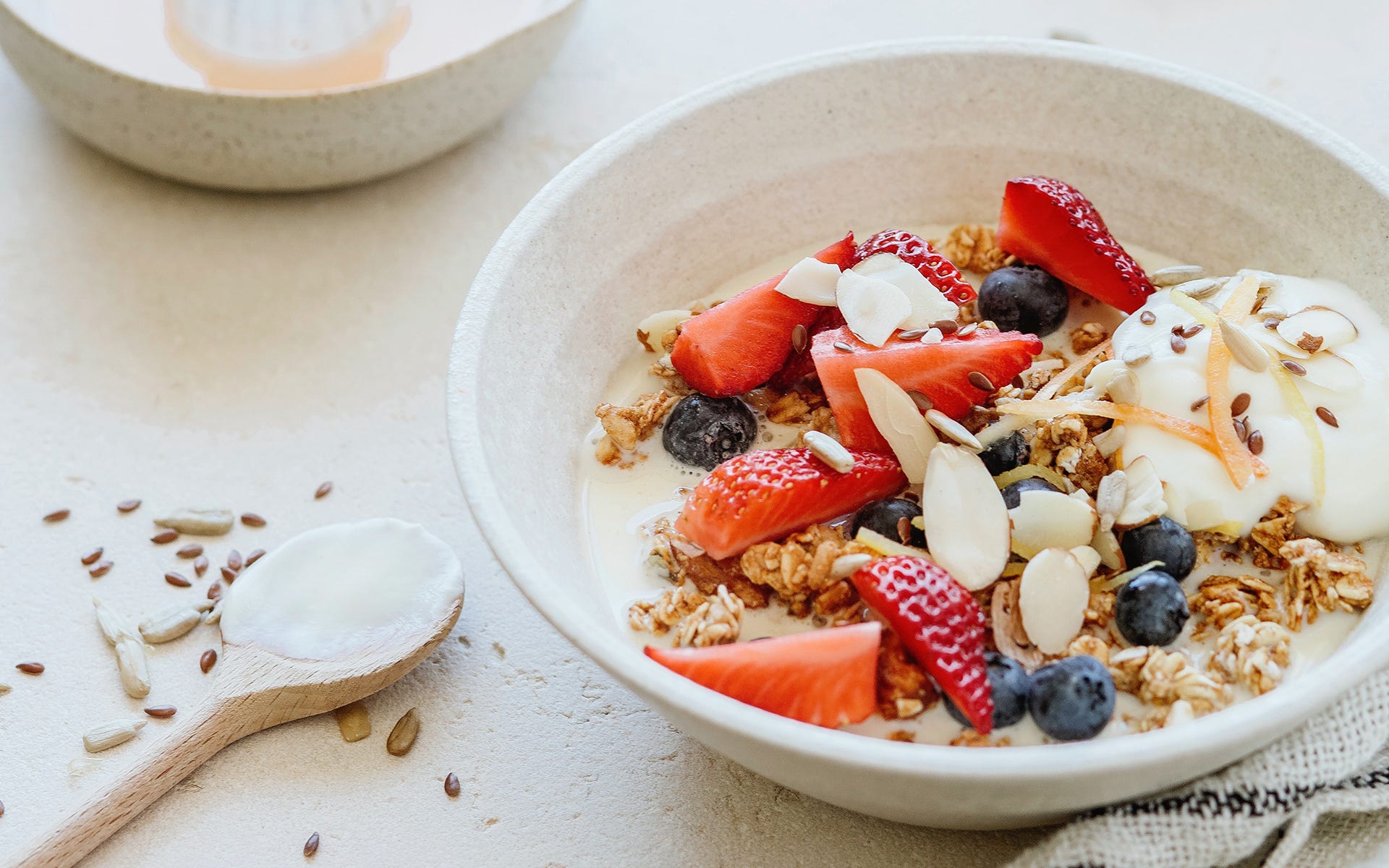
Prebiotics, Probiotics – What’s The Difference?
Probiotics have been on many people’s radar for quite some time now, but the new buzzword popping up all over the place is prebiotics with some suggesting they might be even more important than probiotics – so what are prebiotics and how do they differ from probiotics? Let’s explore. [1][2][3]
What is a prebiotic?
All fibre is good for our gut health, but prebiotics are a special type of fibre known to specifically feed the good gut bugs in our microbiome. Prebiotics occur naturally in many plant foods and travel to the large intestine undigested, where they act as fuel for the good bacteria living in the gut. While it seems obvious that prebiotics could be beneficial for gut health, exciting new evidence is also suggesting they may have other health effects like improved sleep and a reduction in anxiety.
What’s the difference between prebiotics and probiotics?
A good way to explain the difference between pre and probiotics is with an analogy of a garden. If we think of our gut microbiome as a garden, probiotics add more plants to the garden, while prebiotics are a nutrient-rich fertilizer for the plants, helping them grow. Pro and prebiotics can both contribute to a healthy diet, however if the diet is not rich in prebiotics, it might be difficult for probiotics to colonise and thrive.
Where can I find prebiotics?
All fibres come from plant foods and prebiotics are found naturally in some plant foods like specific fruits, vegetables and legumes. Some notable foods that are high in prebiotics are garlic, onions, asparagus, lentils, cashews and oats. As the benefits of prebiotics have become well-known, prebiotics have also been making their way into supplements too. Some common prebiotics that you might find in supplements are chicory root, inulin, fructooligosaccharide (FOS), or galactooligosaccharide (GOS). You might find these combined with probiotics in supplements, as studies have shown that taking the two together may have benefits for the immune system and in inflammatory conditions.[4] When probiotics and prebiotics are combined together, they are called a symbiotic – named so, because they work together synergistically to help the probiotics survive and flourish.
How much prebiotics should I have every day?
The research on prebiotics is still young and there’s no current recommendation for how much prebiotic fibre to consume in a day. However, we do know that most Australians aren’t eating the 25-30 g of fibre they need every day.[5] One way to ensure you get more prebiotics into your diet is to eat more plant foods – while not all plant foods are high in prebiotics, eating a diverse mix of plant foods can help ensure you get some prebiotics every day. You could also look out for probiotic supplements that have prebiotics added to them.
References:
1. Thompson, R. S., Roller, R., Mika, A., Greenwood, B. N., Knight, R., Chichlowski, M., ... & Fleshner, M. (2017). Frontiers in Behavioral Neuroscience, 10, 240.
2. Johnstone, N., Milesi, C., Burn, O. et al. (2021). Sci Rep 11, 8302
3. Noonan, S., Zaveri, M., Macaninch, E., & Martyn, K. (2020). BMJ nutrition, prevention & health, 3(2), 351–362.
4. Pandey, K. R., Naik, S. R., & Vakil, B. V. (2015). Journal of food science and technology, 52(12), 7577–7587.
5. Fayet-Moore, F., Cassettari, T., Tuck, K., McConnell, A., & Petocz, P. (2018). Nutrients, 10(5), 599.
